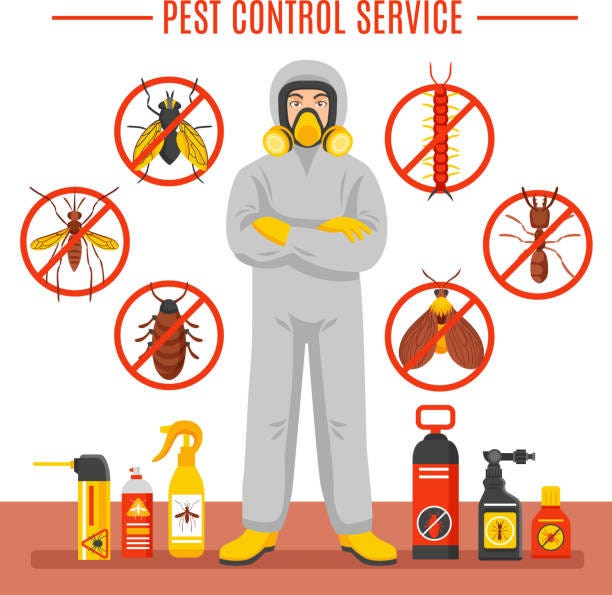Bed Insect Therapy Malfunction: Contrasting Chemical Vs. Non-Chemical Solutions
In the realm of bug control, particularly when managing the relentless concern of bed bugs, the selection in between chemical and non-chemical therapy solutions can be an essential one. Both approaches use distinctive advantages and disadvantages, influencing aspects such as effectiveness, safety considerations, and total expense. By analyzing the nuanced information of each method, a clearer understanding of which path to seek in attending to a bed bug invasion can be attained.
Efficiency of Chemical Treatments
Chemical therapies for bed bug invasions have been commonly recognized for their potent and rapid efficiency in getting rid of these insects. When considering the efficiency of chemical treatments, it is crucial to recognize that they can provide a fast and extensive remedy to a bed insect problem. Expert exterminators typically depend on pesticides to target bed insects at numerous phases of their life process, consisting of nymphs, eggs, and grownups. These chemicals commonly work by interfering with the bed insects' nervous system, bring about paralysis and eventual fatality.
Furthermore, chemical treatments have the benefit of supplying residual impacts, meaning that they can remain to get rid of bed pests even after the preliminary application. This residual activity is especially valuable in combating any prospective re-infestations. Additionally, the quick action of chemical treatments can bring alleviation to people dealing with serious bed bug invasions, allowing them to gain back control of their living spaces promptly.
Safety And Security Worry About Chemical Solutions
One important element that calls for cautious consideration when making use of chemical remedies for bed insect treatment is making sure the security of passengers and the setting. Exposure to particular chemicals used in bed pest treatments can lead to respiratory concerns, skin inflammation, or various other negative responses, specifically in people with pre-existing problems or sensitivities.
In addition, the ecological impact of chemical remedies is another substantial factor to consider. Some pesticides used in bed bug treatments may be hazardous to advantageous insects, wildlife, and environments if they seep right into the soil or water systems. It is necessary to utilize chemical therapies carefully, following safety and security standards, and thinking about much less poisonous options to alleviate these dangers and guarantee the effective and risk-free monitoring of bed insect problems.
Benefits of Non-Chemical Methods
Considering the prospective security problems and ecological effect linked with chemical solutions for bed bug treatment, checking out non-chemical approaches provides an encouraging choice with several distinctive benefits. Non-chemical approaches offer a much safer alternative for households, especially those with animals, kids, or individuals conscious extreme chemicals. These methods eliminate the dangers of direct exposure to poisonous materials, minimizing the capacity for negative wellness effects. Additionally, non-chemical treatments are eco-friendly, as they do not add to air or water pollution, making them a lasting option for insect control.
In addition, non-chemical options can be reliable in targeting bed pests, including hard-to-reach areas where chemical treatments may not permeate - A1 pest control services charlotte. Techniques such as heat treatment, vacuuming, heavy steam cleansing, and mattress encasements supply extensive eradication without the usage of damaging chemicals.
Limitations of Non-Chemical Treatments

In addition, non-chemical treatments typically require numerous applications to attain successful removal. This can be lengthy and may not constantly ensure total removal of all bed bugs and their eggs, especially in hard-to-reach or surprise places.
Additionally, the success of non-chemical treatments heavily depends on correct implementation and thoroughness, which can be challenging for people without specialist proficiency. Learn More Here Insufficient application of non-chemical methods might result in insufficient obliteration, bring about consistent invasions and the need for additional treatments.
Consequently, while non-chemical treatments have their benefits, it is necessary to acknowledge these restrictions and consider them when determining the most efficient strategy for managing bed pest infestations.
Expense Contrast: Chemical Vs. Non-Chemical Options
Given the constraints related to non-chemical therapies, a necessary element to examine in the context of bed bug monitoring is the expense comparison between chemical and non-chemical choices. Chemical therapies normally involve the application of insecticides by specialists, which can vary from $250 to $900 per space, relying on the extent of the infestation and the dimension of the location to be dealt with. On the other hand, non-chemical treatments like heat therapy or vapor can be extra costly, with expenses ranging from $1,000 to $6,000 for an entire home. While the initial expense of chemical treatments may appear lower, multiple therapies may be required to totally get rid of the problem, potentially enhancing the overall price. On the various other hand, non-chemical options might provide a more lasting and green remedy, although they can be cost-prohibitive for some people. Ultimately, when taking into consideration the cost of bed insect treatment choices, it is very important to evaluate the ahead of time expenditures versus the effectiveness and long-lasting sustainability of the selected technique.
Final Thought

Considering the prospective safety and security issues and ecological influence associated with chemical options for bed pest therapy, exploring non-chemical strategies provides a promising choice with numerous unique benefits.Given the restrictions associated with non-chemical treatments, a crucial element to evaluate in the context of bed bug management is the expense contrast in between chemical and non-chemical choices. In contrast, non-chemical treatments like heat therapy or steam can be more pricey, with prices varying from $1,000 to $6,000 for a whole home. While the first expense of chemical treatments might seem lower, several therapies might be required to fully i pest control remove the problem, possibly raising the overall cost.In final thought, when contrasting chemical and non-chemical bed insect therapy choices, it is important to take into consideration effectiveness, security, advantages, constraints, and cost.